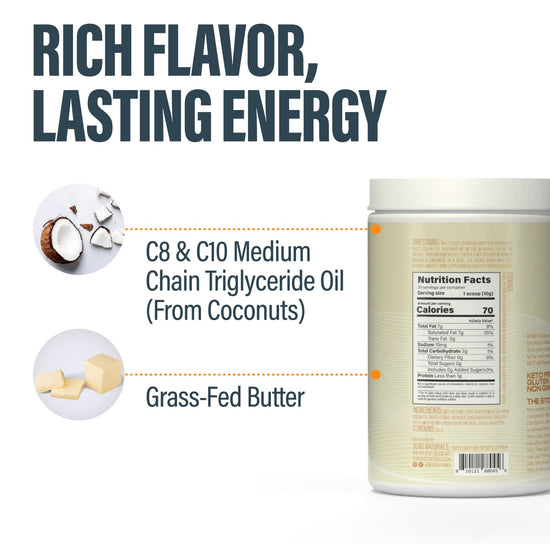Table of Contents
- Introduction
- The Chemistry of Coffee and Creamers
- Types of Creamers and Their Behavior in Coffee
- Practical Tips to Prevent Creamer Separation
- The Impact of Water Quality on Creamer Separation
- Exploring the Role of Flavorings and Additives
- Conclusion
- FAQ
Introduction
Have you ever taken a moment to savor your morning coffee, only to notice your creamer separating and floating on top? It’s a frustrating experience that can take away from your enjoyment of that first sip. The question arises—why does my creamer separate in my coffee? Understanding this phenomenon isn’t just about aesthetics; it can significantly impact your coffee experience.
Coffee is a beloved beverage worldwide, enjoyed by millions for its rich flavors and energizing properties. However, those who take their coffee with cream or milk may be puzzled when their chosen additive doesn’t blend seamlessly. In this post, we’ll delve into the reasons behind creamer separation, explore the science at play, and provide practical tips to enhance your coffee experience.
We’ll examine the factors that cause separation, including acidity levels, temperature, the type of creamer used, and even the quality of your coffee. Additionally, we’ll discuss how to choose the right type of creamer and share tips for achieving that perfect cup each time. By the end of this blog post, you’ll not only understand why your creamer separates but also how to prevent it in the future.
Together, we’ll navigate through the complexities of creamer separation and return to the joy of a perfectly blended cup of coffee. Let’s get started!
The Chemistry of Coffee and Creamers
To understand why creamers separate in coffee, it's essential to grasp the basic chemistry involved. Coffee is inherently acidic, which plays a significant role in how cream or milk interacts with it. Here’s a closer look at the components at play:
1. Acidity Levels in Coffee
Coffee beans contain various acids, such as chlorogenic acids and citric acids, which contribute to their unique flavors. The acidity of your coffee can vary based on its origin, roast level, and brewing method. When high-acid coffee is combined with dairy, particularly older cream or milk, the acidity can cause the proteins in the dairy to denature and clump together, leading to separation.
2. Temperature Matters
The temperature of your coffee can also be a critical factor. When you add cream or milk to very hot coffee, it can cause the fat molecules in the dairy to react negatively. Ideally, adding cream or milk to coffee that has cooled slightly can prevent this reaction.
3. The Role of Creamer Composition
Not all creamers are created equal. The composition of your creamer—whether it's a traditional dairy cream, a non-dairy alternative, or a powdered creamer—can affect how it behaves in coffee. Dairy cream is made up of fats and proteins, while non-dairy creamers often contain additives that can influence their ability to blend with coffee.
Types of Creamers and Their Behavior in Coffee
Understanding the different types of creamers available and how they interact with coffee can help you make informed choices for your morning brew.
1. Dairy Creamers
Dairy creamers, such as whole milk, half-and-half, and heavy cream, are popular choices. They contain fats and proteins that can create a rich, creamy texture. However, as mentioned earlier, older dairy products can curdle when added to acidic coffee. Freshness is crucial; using milk or cream that is nearing its expiration date can lead to unpleasant separation.
2. Non-Dairy Creamers
Non-dairy creamers come in various forms, including soy, almond, coconut, and oat milk. These products often contain stabilizers or emulsifiers to help them blend better with coffee, but they can still separate under certain conditions, especially if they are not formulated for hot beverages. For example, almond milk may be more prone to separation than coconut milk due to its lower fat content.
3. Powdered Creamers
Powdered creamers, like those made from MCT oil or other fats, are often designed to mix easily with hot liquids. However, they may not dissolve well if added to extremely hot coffee, leading to a gritty texture. Choosing high-quality powdered creamers that are specifically designed for coffee can help mitigate this issue.
Practical Tips to Prevent Creamer Separation
Now that we’ve explored the reasons behind creamer separation, let’s look at some practical tips to ensure a smooth blend in your coffee.
1. Use Fresh Cream or Milk
The freshness of your cream or milk can significantly impact its performance in coffee. Always check the expiration date and try to use dairy products that are as fresh as possible. If you’re using non-dairy milk, choose brands that are fortified and designed for coffee.
2. Control the Temperature
Allow your coffee to cool slightly before adding cream or milk. This simple step can prevent the proteins in the dairy from reacting with the coffee’s acidity. As a general rule, aim to let your coffee cool for about 30 seconds after brewing before adding your creamer.
3. Choose the Right Creamer
Consider experimenting with different types of creamers to find the one that works best for your taste and coffee style. For example, if you enjoy a creamier texture, opt for whole milk or heavy cream. If you prefer a non-dairy option, try oat milk, which tends to blend well with coffee. At BUBS Naturals, we believe in providing clean, high-quality ingredients, which is why we offer products that complement an active lifestyle.
4. Stir It Up
After adding your creamer, stirring your coffee thoroughly can help ensure that the cream blends evenly. This is especially important with powdered creamers, which may take a little extra effort to dissolve.
5. Try MCT Oil Powder Creamers
For those looking for an alternative to traditional creamers, our MCT Oil Powder Creamers are a fantastic option. They are designed for easy mixing and can provide sustained energy and mental clarity without the risk of separation. You can explore our MCT Oil Powder Creamers and find the perfect fit for your morning routine.
The Impact of Water Quality on Creamer Separation
One often-overlooked factor in coffee preparation is the quality of the water used. Water quality can affect both the flavor and the interaction between coffee and cream.
1. Hard vs. Soft Water
Hard water, which contains high levels of minerals, can react with the proteins in dairy products, leading to separation. If you live in an area with hard water, consider using filtered or bottled water for brewing your coffee. This can help maintain the integrity of both your coffee and your creamer.
2. The Importance of Clean Brewing Equipment
Keeping your coffee maker and equipment clean is essential. Residues from previous brews can impact the flavor and acidity of your coffee, which may exacerbate separation issues when adding cream. Regularly cleaning your coffee maker, grinder, and storage containers can improve your overall coffee experience.
Exploring the Role of Flavorings and Additives
If you enjoy adding flavorings or sweeteners to your coffee, it's important to consider how they might interact with your creamer.
1. Sweeteners
Sugar and artificial sweeteners can impact the overall chemistry of your coffee. For instance, adding sugar to very hot coffee can increase acidity levels, which may contribute to creamer separation. Instead, consider adding sweeteners after your cream has been mixed in to minimize this effect.
2. Flavorings
Flavor syrups or extracts can also alter the interaction between coffee and cream. Some flavored creamers are formulated specifically to blend well with coffee, while others may not hold up as well under heat. Always opt for high-quality flavorings that are designed for hot beverages.
Conclusion
Understanding why your creamer separates in coffee can significantly enhance your daily coffee ritual. By considering factors such as acidity, temperature, and the type of creamer you use, you can achieve a perfectly blended cup every time. Remember, freshness is key, and experimenting with different creamers can help you discover your favorite blend.
At BUBS Naturals, we are committed to supporting your wellness journey with clean, high-quality ingredients. Whether you prefer traditional dairy cream, non-dairy alternatives, or our innovative MCT Oil Powder Creamers, there’s a perfect option waiting for you.
As you continue to explore your coffee preferences, consider how each element contributes to the overall experience. Are there specific creamers you’ve found that work better than others? What adjustments can you make to your brewing process to enhance your enjoyment?
Take these insights into your next coffee endeavor, and embrace the journey of finding your perfect cup!
FAQ
Q: Why does my cream curdle when added to coffee?
A: Cream can curdle due to several factors, including the acidity of the coffee and the freshness of the cream. Using fresh cream and allowing your coffee to cool slightly before adding it can help prevent curdling.
Q: Can the type of coffee I drink affect creamer separation?
A: Yes, different types of coffee have varying acidity levels. Higher acidity coffees can cause cream to separate more readily, so selecting a coffee with balanced acidity may help.
Q: What are the best creamers for coffee?
A: The best creamers depend on personal preference. Whole milk, heavy cream, and non-dairy options like oat milk or almond milk can all work well. Experimenting with different types can help you find your favorite.
Q: Should I stir my coffee after adding cream?
A: Yes, stirring helps to evenly distribute the cream and can prevent separation. This is particularly important when using powdered creamers.
Q: How does water quality affect my coffee?
A: Water quality can impact flavor and separation. Hard water can react with dairy, so using filtered water may improve your overall coffee experience.
Written by:

Butter MCT Oil Creamer
BUBS Butter MCT Oil Creamer (formerly Halo Creamer): Scientifically-Backed Brain and Body Fuel
BUBS Butter MCT Oil Creamer is your go-to for clean, fast-acting energy and focus, no crash included. It blends creamy grass-fed butter with fast-acting MCT oil powder (C8 and C10) to kickstart your day and keep you sharp. The MCTs go straight to work, giving your brain a quick boost while the grass-fed butter supports digestion and gut health.
Together, they help curb cravings, keep you feeling full longer, and support steady energy throughout the day—perfect for fueling your mornings or powering through the afternoon slump.
Starts at $37.00
Shop

